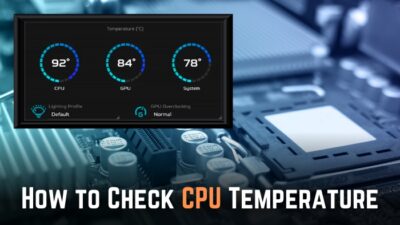Cache and Registers are the data holding places on your CPU. Fundamentally they have the same purpose, yet they function differently.
The main differences lie in their data access speeds and capacity. Without them, the CPU would take a long time to process single streams of instructions.
So, join me as I explain the differences between these two types of memory in detail.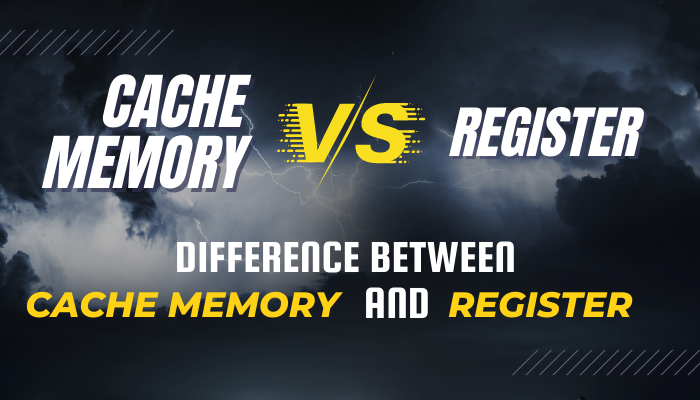
What is a Cache Memory?
A cache is your CPU’s personal memory. Think of it as a place where the CPU can store the instructions and data from the memory. If the cache memory is absent, the processor would take a lot of time just waiting to fetch the next piece of instructions. So basically, the cache is used by the CPU to store computational data.
To better understand it, think of a serving table that waiters use. If it was absent, waiters would need to get the food straight from the kitchen every time. This introduces a delay in the food arriving on your plate. The table serves as a temporary storage medium.
Your RAM or memory is generally very fast. But still, the speed with which the CPU can process instructions leaves everything trailing. That’s what resulted in the introduction of cache memory inside a processor.
This is a representation of cache memory on your system.
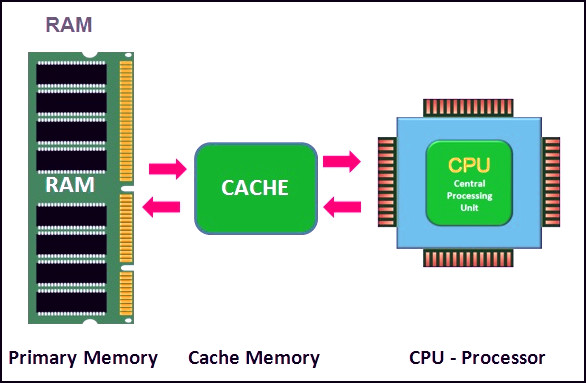
Now, how is the cache memory structured? Let’s take a look.
Types of Cache Memory
To speed up the file access times from a cache, the cache is divided into three levels: L1, L2, and L3.
The L1 is attached closest to the processor. It is the fastest and the smallest of the three. As we go from level 2 to 3, the size of the cache increases to facilitate more instructions. The overall speed decreases as the distance from the processor increases.
This is how the cache is distributed on the flagship Intel i9 13900K.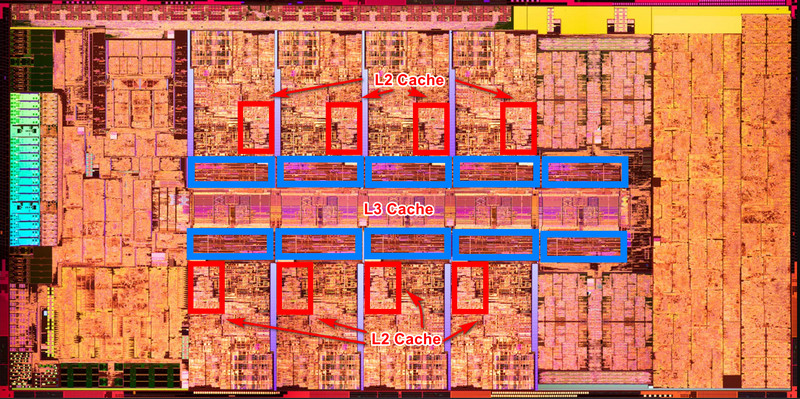
You would see less than a megabyte of L1 cache in most processors. For L2, this would increase to less than 10 megabytes. The L3 cache is the largest at a few megabytes.
Here is how the cache stacks up for the Intel i9 13900K and Ryzen 9 7950X:
| Types of Cache | Intel i9 13900K | Ryzen 9 7950X |
|---|---|---|
| L1 | 2.1 MB | 1 MB |
| L2 | 32 MB | 16 MB |
| L3 | 36 MB | 64 MB |
Speaking of cache, modern CPU core architectures incorporate quite a lot. For example, AMD’s 3D V-cache processors have a massive amount of cache memory stacked on top of the Level 3 cache.
But how much cache does a CPU need?
As it turns out, it depends on the workload and how a program is designed to function in harmony with the CPU.
Nevertheless, the main memory or RAM works very closely with the CPU. We explore how these work together to make a computer tick in a separate article. Do check it out.
What is a Register?
Firstly, are there registers on a CPU? Yes, a big fat yes!
See, registers are even faster modes of storage space on a CPU. When it executes the instructions, the data may be needed to save to the closest point for retrieval.
You may ask, isn’t the cache already present for this same task?
But in reality, frequent data retrieval from a cache to the processor between process executions will introduce a time delay. And we do not want our processors to waste any time waiting. So, that’s where the registers come into the party.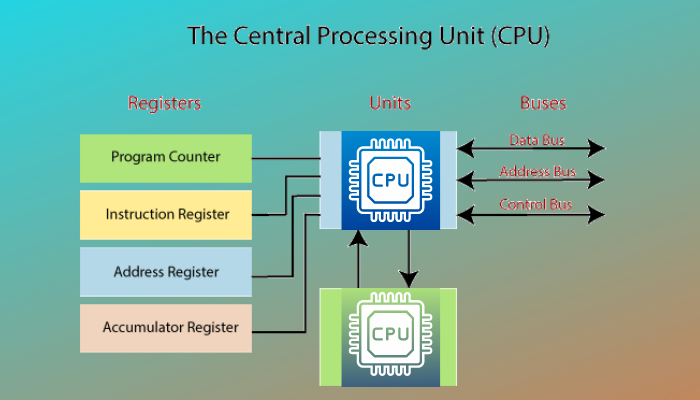
Registers are typically 64 bits in size. That is 8 bytes if you do the conversion.
It may not seem much in terms of storage size, but they are extremely fast. Similar to a cache memory they are made from flip-flops used in SRAM. These contain more transistors than traditional RAM and can hold data much longer.
On a register, you do not need to refresh data periodically. As long as you supply power, data is retained.
Similar to cache memory, there are different types of registers. These are divided to reduce latency even further. Every nanosecond is important here and the focus is on reducing the access times.
What are the Different Registers on a CPU?
The registers are divided, depending on the type of data that they store. Some store addresses and data from memory, while others keep track of the instructions at hand. A few of them serve both purposes, which also include storing additional data needed for the CPU.
The table below will give you a good idea about the register types and their work.
| Type of Register | Function |
|---|---|
| Memory Address Register (MAR) | It stores the instruction’s location in the memory |
| Memory Data Register (MDR) | This serves as a buffer to MAR. It stores data in advance which will be needed by the processor |
| Accumulator | The results of the instructions executed by the processor are stored here |
| Program Counter (PC) | This orchestrates which instructions are to be executed by the processor. The address of instructions for a process is present here |
| Instruction Register (IR) | The actual instruction is stored here |
| Index Registers | Stores the operands used in an instruction |
| General Purpose Register | Stores any type of data required by the processor. It acts like a temporary space for data when other registers are used up |
We explored the functions of registers in a CPU in great depth in a separate article. Do check that out.
Difference Between Cache Memory and Register
Now that you know about caches and registers, outlining some key differences will better help you understand them.
Here are the differences between Register and Cache Memory:
| Cache Memory | Register |
|---|---|
| Faster than your main memory and storage drives. | Is the fastest place to store data on a computer. |
| Stores instructions and data from the memory. | Stores instructions plus the results of the processing done by the CPU. |
| Capacity less than your RAM. From a few kilobytes to a few megabytes. | Capacity is much less than cache memory. Upto 64 bytes. |
| Divided into three levels of varying capacity. | Divided into more than three sections. The Primary ones are PC, MAR, MBR, IC, etc. |
| Closest to a processor in terms of memory. | Closest to the processor |
| Expensive to manufacture than your primary memory. | Most expensive to produce. |
Cache Memory and Register in the CPU’s Memory Hierarchy
Now let’s see where the registers and cache fit in a processor’s memory hierarchy.
The order is pretty simple. At the top, you have the fastest access speeds. Data can be transferred almost instantaneously. But the data stores themselves have very limited space. As you go down this list, the memory size increases at the cost of access times.
Once you get down to the very bottom, you have HDDs or SSDs that provide plenty of storage space. This is where the time to access the data is the slowest.
This pyramid chart is a good representation of the memory hierarchy of your computer.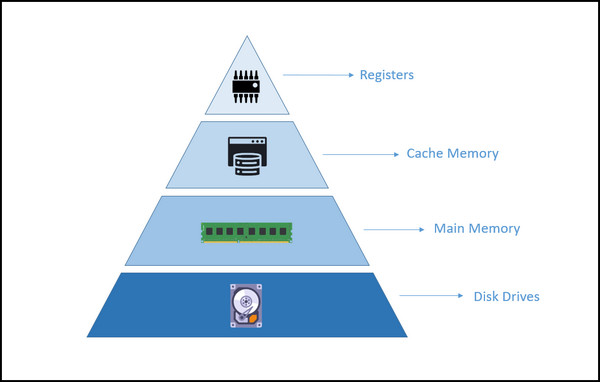
Frequently Asked Questions
Which is faster, cache memory or register?
Registers are much faster than the cache memory of your computer. The cache, however, is much faster than your main memory.
Are registers part of cache memory?
The fastest cache memory are basically registers. Their close proximity to the processor enables such super-fast data access times. Moreover, the registers are divided into sections, to facilitate even quicker loading times.
Final Words
This article lists the main difference between cache memory and registers. The more you have on your system, the better performance you will get.
If you had any confusion regarding these two types of memory, this article should clear that out.
That ends today’s article. Until next time, it’s goodbye.



